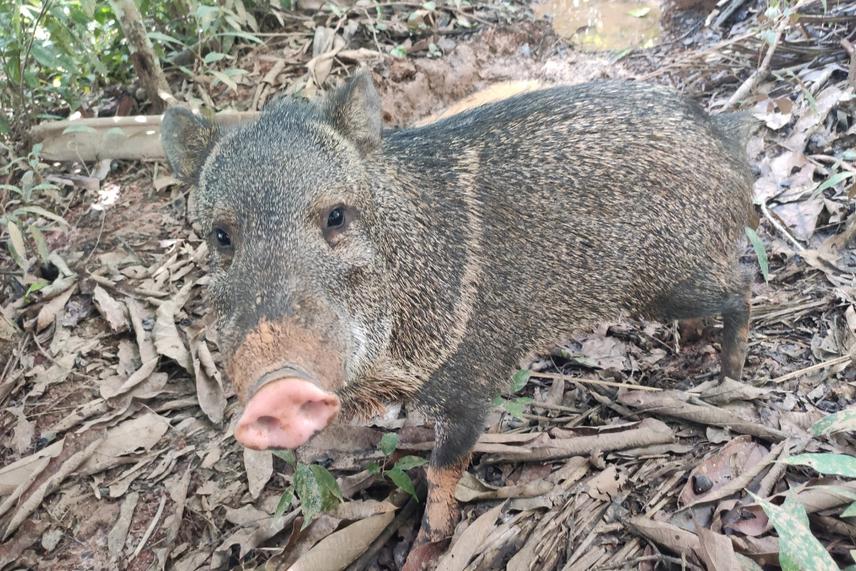Franciany Gabriella Braga Pereira
Other projects
5 Sep 2016
Hunting and Use of Wild Mammals by Human Communities in a Conservation Area in Angola-The Influence of Environment on Hunters's Niche Breadth
We will model the extent and intensity of wildlife depletion by hunt and the wildlife abundance at multiple spatial scales in the Brazilian Amazon, thereby identifying which socioecological variables influence the sustainability of hunting in this region. Also, soil licks landscapes (a key hunting place) will be monitored in regards of their availability in the nature, ecology importance for the wildlife and for the hunt activities. All of these aspects are important to the implementation of community-based sustainable hunting management in Sustainable- use Protected Areas. This will in turn maintain a faunal trophic structure and food security for human populations who rely on wild-sourced protein.

Pecari tajacu.
This study will be conducted around of 60 human communities at 14 Sustainable-use Protected Areas and 1 Indigenous Territorry in the Brazilian Amazon. In all of these areas, traditional human populations are permitted to reside and use soil resources to meet their basic needs, but most still have no guidelines on how hunting should be managed. During the selection of the human settlements for conducting this research, we sought to select heterogeneous scale in regard of ecological and socio-cultural aspects. To model the depletion area and depletion intensity around human settlements we will conduct interviews with expert hunters (approximately 300 hunters) using a smartphone app developed by our research group, in which we will combine spatial data on the seasonal dynamics of hunters' activities.
To estimate the proportion of animal protein biomass from aquatic and terrestrial wildlife and domestic animals it will be asked about fishing and hunting rate per week per season; species flavour preference and species consumption rate per season. During the interviews with the hunters about soil lick it will be presented a logarithmic scale of relative abundance and asked the hunter to point out her/his perceived abundance of each species at different soil lick sites along of the four different seasons. Identification of the soil licks and its geographic coordinate: Licks will be visited and described in terms of their form, number of geophagical sites (spots where animals eat soil) and general features of vegetation cover. At each lick, 1 to 2 soil samples will be collected from the sites where animals ate soil, plus a soil control sample from areas within 50m outside of each lick. Analysis of physics and chemical characteristics of the soils.
The main practical conservation outputs from this work will be The first spatially explicit species-specific model of hunting depletion for the Brazilian Amazon; The quantification of spatio-temporal soil lick availability; and an integrated conservation action plan for community-based game hunting for all sustainable-use and extractive reserves in the Brazilian Amazon. Our model of hunting depletion is a crucial prerequisite to Amazonian game management. For the first time we will provide an assessment of the “state” of game populations in the Brazilian Amazon. By demonstrating the efficiency and applicability of the software developed by our research group, this study will bring advances to the conservation research community, optimizing information collection and increasing the involvement of residents in scientific research.